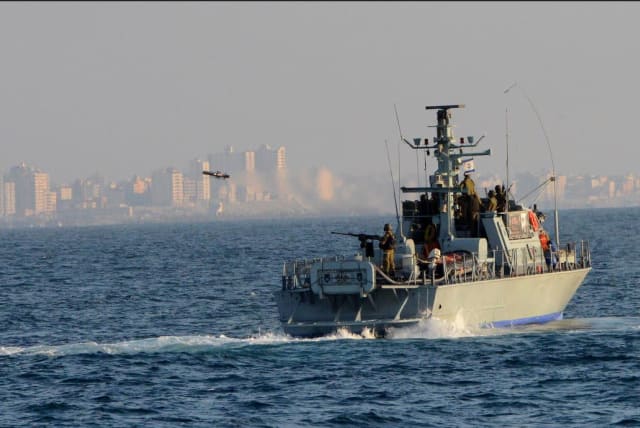IDF has killed significant majority of Hamas navy chiefs

In addition to the navy’s unprecedented involvement in bombarding an enemy on land, Hamas in Gaza, IDF maritime forces are ready in large numbers for any issues from Hezbollah in the North.
The IDF navy and other cooperative efforts have killed a significant majority of Hamas’s naval commanders, it announced on Tuesday.
While the IDF did not provide exact numbers, an infographic viewed by the Jerusalem Post indicated that around up to 70% might be dead.
Statistics provided by the IDF included a mix of both Hamas naval commanders who are confirmed dead and others who have been attacked and have not since been heard from, and many of who are likely dead, but regarding who the IDF is withholding a final determination at this time.
In a photo provided by the IDF, it showed several Hamas naval commanders meeting with Hamas Shejaia battalion commander Wessam Farhat.
Farhat was assassinated on December 2 and four other senior Hamas naval commanders in the photo have been eliminated.
He was deeply involved with Hamas naval forces because of Shejaia’s proximity to a number of its naval bases of activity.
This is actually better than the IDF has done against Hamas’s broader forces where estimates have closed in on the IDF having killed, injured, and arrested between 40-50%.
Naval successes against Hamas
Another success of the IDF navy has been integrated attacks on a wide variety of Hamas terror forces, along with the infantry, air force, artillery and tank command.
Besides the contribution by the navy’s ships, its Shayetet 13 navy seal commandos have been involved in daily raids and operations.
While most of those operations are still secret, the IDF has revealed the Shayetet’s involvement in taking over Rantisi Hospital in Gaza and revealing a significant tunnel, with massive amounts of weapons and traces of both adult and baby hostages there.
Despite the navy’s successes, the IDF and the government appear adamant to avoid a direct naval confrontation with the Houthis of Yemen at sea, hoping instead to convince the US, England, and other world powers to handle the issue.
It is unclear if the IDF navy’s primary consideration here is how far away it would need to operate and how spread thin it would be if it started to try to protect ships passing near Yemen, or whether it is based more on the idea that getting the world to fight Yemen will further isolate the Houthis and their Iranian sponsor.
In addition to the navy’s unprecedented involvement in bombarding an enemy on land, Hamas in Gaza, IDF maritime forces are ready in large numbers for any issues from Hezbollah in the North.
Infographics viewed by the Post showed a tremendous naval posture near the North.
Moreover, while the IDF does not comment on where its submarines are based and there has been no comment about their involvement against Hamas, it has strategic options in the North which could allow it to compensate for land to sea missiles which Hezbollah possesses.
The IDF has also captured or destroyed significant portions of Hamas’s naval ships and vehicles, including underwater drones and other underwater threats.
In that vein, the IDF believes it has destroyed most of the dozen or more underwater threats, but admits that the picture is still unclear.
Jerusalem Post Store
`; document.getElementById("linkPremium").innerHTML = cont; var divWithLink = document.getElementById("premium-link"); if (divWithLink !== null && divWithLink !== 'undefined') { divWithLink.style.border = "solid 1px #cb0f3e"; divWithLink.style.textAlign = "center"; divWithLink.style.marginBottom = "15px"; divWithLink.style.marginTop = "15px"; divWithLink.style.width = "100%"; divWithLink.style.backgroundColor = "#122952"; divWithLink.style.color = "#ffffff"; divWithLink.style.lineHeight = "1.5"; } } (function (v, i) { });

